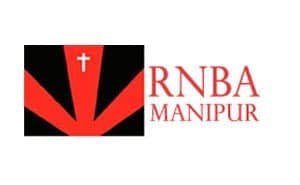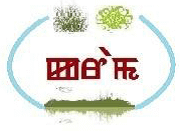ILDC 2021 Agenda
[ivory-search id=”7239″ title=”Session Search”]
23 Nov 2021
T1-S2 : Development & Displacement in NE India 13.30 - 15.00 hours (IST)
Session Organizer:   | |
 Chair: Chair:Yumnam Jiten Secretary Centre for Research and Advocacy, Manipur |  Anthony Debbarma Anthony DebbarmaHRD, General Secretary, Borok Peoples Human Rights Organization (BPHRO) |
 Mayalmit Lepcha Mayalmit LepchaPresident Sikkim Indigenous Lepcha Tribal Association |  Lalremruata Chhakchuak Lalremruata Chhakchuak |
 Gunrei Kamei Gunrei KameiMember Centre for Research and Advocacy, Manipur |  Tirtha Saikia Tirtha SaikiaAssistant Professor, North East Affected Development Society |
T4-S1 : Oil Palm Expansion in India: Key Issues and Considerations 13.30 - 15.00 hours (IST)
Session Organizer:  | |
 Video Link Video Link | |
 Bhavana Prasad Bhavana PrasadDirector Sustainable Business, WWF-India |  Kamal Prakash Seth Kamal Prakash SethCountry Head – India Global Deputy Director – Market Transformation Roundtable on Sustainable Palm Oil. |
 Moderator: Moderator:Jayahari K.M FOLU India Country Co-ordinator World Resources Institute India |  Babu Thomas Babu ThomasManaging Director Oil Palm India Ltd |
 Joanna Dawson Joanna DawsonBalipara Foundation |  Amba Jamir Amba JamirDirector, Sustainable Development Forum, Nagaland and vice president of Integrated Mountain initiative, Nagaland |
 Ruchika Singh Ruchika SinghDirector – Sustainable Landscapes and Restoration, WRI India | |
As part of its strategy for self-reliance (Atma Nirbhar Bharat), the Government of India launched the National Mission on Edible Oils – Oil Palm (NMEO-OP) in August 2021 to ramp up palm oil production in India, scaling the current 350,000 hectares coverage of oil palm plantations by another 650,000 hectares by 2025-26. According to scientists at the Indian Institute of Oil Palm Research, India consumes over 25 million tons of palm oil every year, of which roughly 10 million tons are produced domestically, and 15 million tons are imported (Majumdar, 2021). Palm oil is used in a vast array of processed food and consumer products due to its cost-effectiveness, and the government seeks to cater to the domestic demand for palm oil by increasing domestic production.
Research on agrarian change in Southeast Asia has demonstrated that oil palm plantations are major drivers of biodiversity loss, deforestation, and water scarcity. The NMEO-OP mission is being rolled out in India even as other countries, such as Sri Lanka and Indonesia, which had converted vast swathes of forest to oil palm plantations, are scaling back production considering its harmful social and ecological externalities. By contrast, Nature-based Solutions such as landscape restoration are gaining recognition as a triple win for people, the environment, and the economy.
This session will discuss the socio-economic and ecological implications of the NMEO-OP’s plans to scale palm oil production in India, especially the Northeast. WRI India’s Restoration Opportunities Atlas shows that the north-eastern states collectively have over 14 million hectares of land available for tree-based restoration interventions, with the potential to additionally sequester between 375.83-392.62 million tons of above-ground carbon by 2040 (Chaturvedi et al., 2018). In the context of northeast India, the area identified for restoration potential would overlap with the area that could be expanded under oil palm plantations. Expansion of oil palm plantations would thereby lead to achieving much less additional above-ground carbon compared to what is estimated through tree-based restoration. The panellists will deliberate on the trade-off between restoring available land and converting it into oil palm plantations—as the area for both practices is essentially the same.
Further, the session will focus on the mission’s impact on livelihoods and nutrition security of forest-dependent communities, and small and marginal farmers. The panellists will deliberate on the impact of large-scale change of land-use on communities that depend on current land-use/land-cover systems for NTFPs and traditional practices such as jhum for nutrition and food security, as well as for several ecosystem services for their livelihoods and cultural identities. They will also discuss the financial and ecological risk of oil palm plantations for small and marginal farmers given their long gestation period and non-native nature. These issues will be discussed in the broader context of India’s various international commitments under the Bonn Challenge, Nationally Determined Contributions, Sustainable Development Goals, etc. for combatting climate change and preserving biodiversity, as well as its commitment to improving farmer incomes.
The panel will consist of experts from research organizations, representatives from civil society organizations working on palm oil, and practitioners.
T6-S5 : 5 years of RERA: Capacity Building & Education 13.30 - 15.00 hours (IST)
| Session Organizer: | |
 Video Link Video Link | |
 Omokolade Akinsomi Omokolade AkinsomiAssociate Professor, University of the Witwatersrand |  Ratoola Kundu Ratoola KunduAssistant Professor, Centre for Urban Policy and Governance,TISS-Mumbai |
 Anil Kashyap Anil KashyapDirector General NICMAR, Pune |  Reema Bali Reema BaliAssociate Director Programmes, School of Real Estate and Infrastructure, RICS School of Built Environment, Amity University, Noida |
 Prashant Das Prashant DasAssociate Professor of Real Estate Finance at the Indian Institute of Management, Ahmedabad (IIMA) |  Triveni Prasad Nanda Triveni Prasad NandaAssistant Professor, RICS School of Built Environment, Amity University |
 Aparna Soni Aparna SoniAssistant professor, Department of Planning, School of Planning and Architecture, Bhopal |  Bhuvaneswari Raman Bhuvaneswari RamanResearcher, Architect, Urban plannner |
T6-S6 : Land and Access to Finance 13.30 - 15.00 hours (IST)
| Session Organizer: | |
 Video Link Video Link | |
 Deo Shankar Tripathi Deo Shankar TripathiManaging Director & Chief Executive, Aadhar Housing Finance Ltd. Officer |  Diya Uday Diya UdayResearch Lead, xKDR Forum |
|  Sudha Narayanan Sudha NarayananResearch Fellow, IFPRI |
 Joseph Sebastian Joseph SebastianAssociate, Investments omidyarnetwork |  Manoj Vishwanathan Manoj VishwanathanMD and CEO, Home First Finance Co. India Ltd. |
 Manindar Juneja Manindar JunejaRetail Business Head at ICICI Bank | |
This session is designed to present research-work that examines important questions about land and access to finance. It includes a panel discussion with experts from the field.
Land plays a dual role of being both (i) an asset for wealth creation and access to finance for households and also (ii) a tool for providing tenure security and homestead to vulnerable households. In the first instance, land is often viewed as an important factor in enabling access to credit by households because it is an ideal collateral given that can by easily identified and its value appreciates over time. While land constitutes a large portion of the household asset portfolio, the formal mortgage penetration in the country is low.[1] Despite having a high proportion of land-based assets, households are continuing to rely on informal lending.[2] This is not desirable and requires a deeper analysis of why this is the case. Schemes such as the Survey of Villages and Mapping with Improvised Technology in Village Areas (SVATMITVA) and Digital India Land Record Modernisation Programme (DI-LRMP) are gaining impetus as they are perceived to aid in better access to household credit by improving land records and titles. But are they in fact improving access to credit on-ground?
The second function of land is to provide a base for adequate supply of housing and homestead for vulnerable households. A paradox in the housing market is that one hand there is a housing shortage and on the other hand there is a build up of vacant houses. A key reason for this is the lack of affordable housing. It is estimated that nineteen million households are affected by housing shortage.[3] Government schemes such as the Pradhan Mantri Awas Yojana(PMAY) and the Atal Mission for Rejuvenation and Urban Transformation (AMRUT) as designed to increase the supply of affordable housing. However, a major stumbling block has been the access to finance for completion of such projects. In November 2019, the central government launched the Special Window for Funding Stalled Affordable and Middle-Income Housing Projects (SWAMIH)scheme aimed at providing priority debt financing for completion of stalled housing projects in the affordable and middle-income category. The role of land in finance once again takes centre-stage as these unfinished projects become collateral for lending by banks.
There is, therefore, an interlinkage of the role of land – it can be for access to finance not only by households but also builders of affordable housing projects which will in-turn provide housing for vulnerable households and enable them to use their finished house as asset to access to finance.
Therefore, questions such as: how can land be used to access finance? What should be the role of the state in ensuring better access using land as collateral? Are current land schemes to increase access to formal finance working? Are these the right interventions or should we be thinking about interventions through a different lens? What are the risks to lenders in lending against collateral in the current landscape of poor titles and records? are of utmost importance.
T3-S1 : Combining property rights perception and land records: Implications for India’s land policy 15.30-17.00 hours (IST)
Session Organizer: | |
 Video Link Video Link | |
 Prerna Prabhakar Prerna PrabhakarAssociate Fellow at NCAER |  Deepak Sanan Deepak SananIAS (Retd.), Senior advisor to NCAER and IIHS and Senior Visiting Fellow at CPR |
 Moderator: Moderator:Dr K P Krishnan IEPF Chair Professor in Regulatory Economics |  Anna Locke Anna LockeDirector of ODI’s Sustainable Environments and Societies programme |
 Annindya Banerjee Annindya Banerjee National Legal Head -Retail Lending at HDFC Limited |  Chockalingam S Chockalingam SDirector General, Yashwantrao Chavan Academy of Development Administration (YASHADA) |
Indian courts are clogged with cases pertaining to land. Land-related disputes in India account for about 60 to 70 per cent of all civil litigation. About 25 percent of all cases decided by the Supreme Court involve land disputes, of which 30 per cent concern disputes relating to land acquisition (Wahi, 2019 1 ). Inaccurate land records in the country further worsens the situation. According to a pilot impact assessment of the GoI’s Digital India Land Records Modernisation Programme (DILRMP), a wide
divergence was observed between the on ground situation and the written land records, reflecting both a lack of comprehensiveness and accuracy in the land records (NCAER, 2017 2 ).
Digitization is an important step towards land record management as it reduces the time and cost involved in updating records and also limits the possibility of inadvertent human errors. Digitization of land record related services can also ensure e-linkages of relevant departments and hence facilitate multi stage and inter departmental processes like registration, mutation etc. However, digitization of land records alone cannot ensure an efficient system of land record management and has to be accompanied by accuracy of land records that are consistent with ground reality.
Against this backdrop, the NCAER Land Records and Services Index (N-LRSI) released in February 2020 provided an assessment of the extent of digitization and quality of land records in Indian States/UTs. N-LRSI is based on publicly available information on land records. Till date, two editions of N-LRSI have been released – N-LRSI 2020 and N-LRSI 2021 3 . Between the two editions, the overall N-LRSI score, reflecting the extent of digitisation and quality of land record increased by 16.6 per cent at the national level, reflecting state level efforts in this direction, despite the fact that during the year 2020
nearly all the economic activities in the country were hard hit by the Covid 19 pandemic. Another significant fact that became evident is that these improvements in 2021 were driven by states’ own funds, and did not use the allocations under the central program. The need for improving land administration services appears to have become a policy priority. While expanding and improving the quality of land records reflects the efforts on the supply side of these services, how are they perceived and used by the users? To address this question, it was felt that a demand side component be added to the index. This could assess to what extent households are actually aware of, use and value digitised land records. Another dimension of rights of property strengthened by improvement in the land records and related services of the government is the perception of the citizens of the security of their rights in property. Do the improvements in land records and services lead to perceptions of greater security of property rights, leading to positive impact on investments in property that enhance its value and productivity? An
the opportunity to examine these two related aspects has been presented by the integration of the ‘demand side survey’ of N-LRSI with the survey of perceptions of security of property rights in India as part of the Prindex India Survey. ‘Prindex’ is a globally comparable measure of perceived tenure security. The most
recent version is based on nationally representative surveys in 140 countries of individual respondents randomly selected from within a household, including women and young adults carried out in 2017. The Global Land Alliance (GLA) carried out the first worldwide Prindex survey in 2016 in which India was also included. The survey had 14,000 respondents in 14 Indian States to evaluate the situation in India. Later India was a test case in a three-country methodological study during 2017 to identify the best way to measure tenure security and to validate earlier results. This involved a larger sample of about 16,475 respondents in 24 Indian States and Union Territories. Learning from the global experience and more specifically experience of Prindex surveys in India, it is now proposed to carry out an integrated sample survey of households addressing both the demand side perspectives on land records and perceptions of security of land and housing property rights. The combination of LRSI and Prindex will open up opportunities for rigorous study of the inter linkages between formal tenure and subjective perception of its security. It will also allow assessing the differences in awareness about formal tenure status and related rights, allocation of assets within the household, rights to them and their productive use, participation in off-household productive activities and linkages across housing and land markets. This may be particularly relevant for rural and peri-urban markets where the separation between housing and land markets is greater than in urban markets. To meet the objectives of the proposed study, a primary survey will be conducted spanning 25 Indian States/UTs, covering 15,800 households. After a number of iterations and review by experts, sampling strategy and questionnaire in this regard have been drafted.
Besides this sample survey, covering both rural and urban households, the research program supported by separate grants to NCAER and ODI from Omidyar Network India will also include a case study of the impact of digital land records on the perception of security of rights and a study of state laws relating to transactions in land.
This proposed ILDC session aims to discuss the comparison between supply side NLRSI 2020 and 2021. The session will then delve into the broad objectives of NLRSI-Prindex India study, with specific focus on various aspects of property rights and land records that will be covered under this study and the potential implications to policies related to property rights in India.
T4-S2 : Forest Tenure Innovations Around Small Holders: Global Examples with India Implications 15.30 - 17.00 hours (IST)
Session Organizer:  | |
 Video Link Video Link | |
 Council Dickson (CD) Langoya Council Dickson (CD) LangoyaForestry resources, environmental and natural resources planning and management specialist |  Jintao Xu Jintao XuProfessor, National School of Development at Peking University |
 Lennart Ackzell Lennart AckzellSenior Advisor for International Affairs , Federation of Swedish Farmers (LRF) |  Parthiban K.T Parthiban K.TDean Tamil Nadu Agricultural University |
 Safia Aggarwal Safia AggarwalForestry Officer · FAO |  Ruchika Singh Ruchika SinghDirector – Sustainable Landscapes and Restoration, WRI India |
 Pranab R Choudhury Pranab R ChoudhurySecretary ILDC Founder NRMC-CLG (Intellecap Subsidiary) | |
Governments are increasingly devolving forest tenure rights to smallholders and recognizing tree rights of farmers on agricultural lands. Many governments are also incentivizing smallholders to grow trees to help meet domestic needs of wood and wood products. Despite this, smallholders around the world are challenged by numerous barriers that prevent them from generating incomes from these rights or in contributing substantially to national wood-based economies. The Government of India MoEFCC is currently making efforts to enhance the cultivation of trees outside of forests and strengthen the sustainable production of wood and wood products from agricultural lands and in the process operationalizing the 2014 Agroforestry Policy. However, some studies show that private forest owners and farmers in India continue to have weak incentives to grow trees. What are the legal and regulatory challenges faced by smallholders in India? What are some of the critical institutional challenges faced by smallholders in country? What can we learn from countries that has successfully scaled up and strengthened smallholder forestry in their countries and is now meeting significant domestic demand for wood and wood products? This session will respond to these questions and bring experiences from China, Sweden, Uganda and India to inform the discussions.
T6-S7 : Inclusive Land Tenure Security 15.30 - 17.00 hours (IST)
Session Organizer:  | |
 Video Link Video Link | |
 Chair: Chair:Shri.B. K. Agarwal IAS Secretary Lokpal of India, Government of India | |
|  Paper Presenter Paper PresenterMrs.Rachanadevi Vaishnav |
 Paper Presenter Paper PresenterDr Mizinksa Daimari |  Paper Presenter Paper PresenterDr. Samhita Barooah |
Session Organizer: | |
 Video Link Video Link | |
 Judge JudgeTriveni Prasad Nanda Assistant Professor, RICS School of Built Environment, Amity University |  Archana M.L Archana M.LIntern-City Speaks |
 Mentor: Mentor:Harshal Gajjar External Consultant with the Indian Institute for Human Settlements, Delhi |  Mentor: Mentor:Swapnil Saxena External Urban Development Practitioner |
 Mentor: Mentor:Anagha Jaipal Research Officer Housing and Land Rights Network |  Mentor: Mentor:Lakshmi Jahnavi Ph.D. Research Scholar Land Conflicts |
 Mentor: Mentor:Vidhulekha Tiwari Ph.D. Research Scholar, Center for Urban Sciences and Engineering |  Mentor: Mentor:Sukrit Nagpal Team Lead for the land rights vertical, SEWA Bharat |
 Paper Presenter: Paper Presenter:Soormit Chattopadhyay |  Paper Presenter: Paper Presenter:Meghna Menon |
 Paper Presenter: Paper Presenter:Aprita Victor |  Paper Presenter: Paper Presenter:Aarushi De |
 Paper Presenter: Paper Presenter:Deepannita Misra |  Paper Presenter: Paper Presenter:Ngugi Moses |
 Paper Presenter: Paper Presenter:Sharbani Chattoraj |  Paper Presenter: Paper Presenter:Parnika Ray |
The policy-athon is a platform to conflate our youth’s perceptive, innovative minds with issues of urban land governance and development through a Rights-based, Livelihood-based, and Technology-based approach. This is a quest to enable the young citizens to voice their policy solutions, and facilitate greater practicality, innovativeness, and nuance in public discourse.
Undergraduate and graduate students from all over India are invited to research, design, and present their proposals in this three-round competition. The first stage involves the submission of a one-page research document, identifying an urban land governance issue, and drafting a brief solution for the same. During the second round, the selected proposals will get the opportunity to refine their policy solution through the help of mentorship by young academic achievers and changemakers assigned to them. In the third round, a panel of expert judges will evaluate the proposals in real-time and give actionable feedback in the plenary session.
With the intent to foster the interest of youth in mitigating urban land issues, The Policyathon is a great way for students to gain hands-on experience in the policy-making arena outside the classroom. The platform has put in place a mentorship and feedback mechanism, along with an opportunity to pitch and present proposals for better urban governance.
Session Organizer:  LANDex LANDex | |
 Video Link Video Link | |
 Malcolm Childress Malcolm ChildressGlobal Land Alliance |  Ward Anseeuw Ward AnseeuwResearcher International Land Coalition |
 Dalip Singh Dalip SinghDDG(AC), Department of Agriculture and Farmers Welfare | |
This session will discuss the Status of monitoring of land ownership in general in India and of relevant SDG indicators (viz. 1.4.2, 5 a 1a) in particular in India, connecting it to global experiences around the role of National Statistical and alternative reporting. This conversation intends to also focus on the role of Central Statistical Organisation and how that can be advanced in India.It would bring in global experiences around how countries are gearing up to SDG land indicators reporting through building capacity of CSO as well as through use of alternative data like PRIndex.
Session Organizer:   | |
 Video Link Video Link |
|
|
|
|
|
 Arshia Gupta Arshia GuptaAgriculture Analyst, South Asia Region, The World Bank |  Pranab R Choudhury Pranab R ChoudhurySecretary ILDC Founder NRMC-CLG (Intellecap Subsidiary) |
 Mr Girish Kandambeth Mr Girish KandambethLandryt |  Ms Shraddha Joshi Ms Shraddha Joshi MD, MAVIM |
Land ownership is broadly determined by having a land title, which protects the rights of the title-holder, and impacts livelihoods, and industrial, economic, and social growth. Although, land records have been digitized in India under Digital India Land Record Management Program (DILRMP), it lacks a gender column thereby not providing gender segregated data on land ownership. With increasing feminization of agriculture in India, adding women’s name in land records is imperative.
In the contemporary land administration, an entry point towards tenure security, is the name in the legitimate land records or quasi-legal documents. It may not automatically lead to access and control in a patriarchal society, but documented land tenure/rights definitely add a legitimate confidence and opens up windows to public services entitlements and market interests. This could enhance women’s access to formal credit, insurance, caste certificate, farm subsidies, Direct Benefit Transfer and Minimum Support Price etc. which are now increasingly connected to digital land records. Adding women’s name in the land records, as existing laws provision, has transformative impact. When added in land records in scale in a populous country like India with speed, the needle towards equality SDG goals, globally, can move faster. Making digital land records sex-disaggregated can make SDG monitoring and reporting easier, seamless and in real time, while providing insights to local policy and practice
The proposed panel for ILDC 2021, aims to engage in conversations based on legal provisions, institutional innovations and technology pathways that can add women’s names in land records/documents at scale with speed, that open up avenues for economic freedom for women.
The session would deliberate on the experience, impact and challenges around following technology and institutional pathways, as potential low hanging fruits and examine their scaling prospects
Tech 1: In a partnership with the Land Revenue Department in West Bengal to provide land literacy training, Landesa, assisted the State Rural Livelihoods Mission to enhance women SHG member’s access to land related services and entitlements wherein trained leaders could digitally interact with the State portal to update their land records through a mobile application.
Tech 2: This RNBA project trained local youth to use a mobile phone to map and document long-term (viz. Horti/Agroforestry) land-use rights with concurrence from local communities resulting in traditional (legitimate) village authorities issuing Land Tenure Certificates with joint title (including women’s names), spatial details, and documentation of customary norms. The process involved local and customary institutions and was shared with state-level actors, including members of autonomous district councils (ADC), clan leaders, and Government officials. The resultant document enhanced rights and dignity of women, economic activities and opened windows to public services entitlements.
Inst 1: The Working Group of Women for Land Ownership (WGWLO), by building the capacity of its own network members and land administration officials, provides appropriate legal and institutional support in the form of para-legal workers in Legal Clinics (Swabhoomi Kendras) to add wife/daughter’s name in land records while also linking them to farm-support services for sustainable farming.
T5-S1 : Supporting Progressive Judicial Actions for Commons Conservation 17.30 - 19.00 hours (IST)
Session Organizer:  | |
 Video Link Video Link | |
 Anchor: Anchor:Sanjoy Patnaik FES |  Pooja Chandran Pooja ChandranAdvocate, Senior Project Manager-FES |
 Hagar ElDidi Hagar ElDidiResearch Analyst, International Food Policy Research Institute |  Kanchi Kohli Kanchi KohliSenior Researcher, Centre for Policy Research |
 Mukta Joshi Mukta JoshiAdvocate, Legal Associate – Land Conflict Watch | |
The session would highlight the development of legal processes around Commons and key judicial pronouncements across the country to protect and conserve Commons. It would discuss and analyse the processes through which progressive judicial actions have been integrated into state laws and the areas needing legal and administrative attention.
The deliberations would also focus on the critical role played by Indian judiciary in protecting the interests for those seeking justice and holding the legislature and executive to account. For Commons, this manifested into the watershed judgment of Jagpal Singh versus State of Punjab (2011), wherein the Indian Supreme Court took cognizance of the historical and socio-cultural significance of Commons and the urgency of protecting such Commons.
The natural heritage of the planet serves as an economic resource earmarked for common use and convenience, with or without recorded rights for communities that conserve and manage them. These Commons, including land, pastures, soil, forests and water, maintain ecological balance, and constitute about one-fourth of India’s total land – land that rural communities can access and use for their basic needs of food, water and livelihoods. These resources are critical to life and livelihood for tribals, other forest dwellers, landless and pastoralist households; particularly women for being the first and the natural conservationists.
Commons as a collective of shared natural resources for common good and public service with a defined community ownership framework has received limited attention by policy makers. Common lands not being ‘cultivable’ could hardly fetch any revenue, therefore, became ‘revenue wastelands’ for colonial masters. Though it was inaccurate to define such massive tracts of land as ‘wastelands’ just on the basis of the revenue returns, this ‘wasteland approach ‘continued to reflect in policies even after independence.
T7-S4 : Media Round Table on Land rights reporting in India 17.30 - 19.00 hours (IST)
Session Organizer:  | |
 Video Link Video Link | |
 Vaishnavi Rathore Vaishnavi Rathore The Bastion |  Rina Chandran Rina ChandranThomson Reuters Foundation |
 Prudhviraj Rupavath Prudhviraj Rupavath Land Conflict Watch |  Grace Jajo Grace JajoJournalist , Manipur |
 Nitin Sethi Nitin SethiPartner and Editorial Advisor, Land Conflict Watch and Media Lead National Foundation of India | |
T5-S2 : Bridging gaps in Payment for Ecosystem Services (PES) Markets in favor of Communities in India 19.30 - 21.00 hours (IST)
Session Organizer:  | |
 Video Link Video Link | |
|  Sanchyan Chakraborty Sanchyan ChakrabortyPartner, Aaviskaar Capital |
|  Sandeep Roy Choudhury Sandeep Roy ChoudhuryDirector and Co-Founder, VNV Advisory and Services |
| |
This session would highlight the ways in which the processes related to ecosystem services can be made favourable to natural resources dependent communities that are the natural stewards of biodiversity while ensuring. The session will also deliberate global payment process – issues and challenges, and carbon markets in India.
There are divergent views about Payment for Ecosystem Services (PES) markets, carbon credit markets included, and their utility in delivering benefits to local communities based on the distinctive environmental and ecological economic perspectives prevailing among scientists, planners and civil society organizations.
Needed is greater knowledge by all potential stakeholders, including but not limited to communities, potential investors, governments, financial institutions, and India’s NGO community on the environmental, social and economic value and feasibility (institutionally and operationally) of Payment for Ecosystem Services (PES) and carbon markets in fostering better conservation practices, resource management and social outcomes. Private investors and markets have much to learn from communities about, and vice versa!
Communities that have realized the significance of their natural heritage, and have invested in conservation are realizing benefits already, in the form of family food security and income, agricultural productivity, cleaner and more reliable water supplies, reduced erosion and healthier soils, and better grazing lands. Communities, particularly women as the natural stewards of nature, and local governments may be aware of these ‘local’ benefits, but likely less aware of how their actions, practices and investments have contributed to better environmental outcomes beyond their villages, districts and ecosystems. Moreover, despite the stewardship of communities, with a major contribution of women towards the conservation of natural resources, the tenurial systems and laws seldom recognise the benefits of community and women-led conservation flowing out to the global good.
This begs the big questions: How can communities be recognised, encouraged, rewarded and compensated more fully for their investments of indigenous wisdom, effort and collectives action that lead to universal material environmental gains? What can be the institutional arrangements through which the decisions of women regarding conservation of their natural heritage get integrated into the policy and economic instruments that decide the fate on an ecosystem?
T6-S4 : Emerging Issues in Land Transition: The Great Indian ‘Rurban’ Challenge 19.30 - 21.00 hours (IST)
Session Organizer:  | |
 Video Link Video Link | |
 Sh. Vivek Kumar Singh Sh. Vivek Kumar SinghAdditional Chief Secretary, Revenue and Land (Bihar) |  Sh. Shekhar Gaikward Sh. Shekhar GaikwardSugar Commissioner, Maharashtra |
 Sh. Raveesh Gupta Sh. Raveesh GuptaCollector and DM Sultanpur (UP) |  Sh. Kaustubh Diwegaonkar Sh. Kaustubh DiwegaonkarCollector and DM, Osmanabad (Maharashtra) |
 Sh. Aman Mittal Sh. Aman MittalMunicipal Commissioner, Latur (Maharashtra) |  Sh. Divyanshu Patel Sh. Divyanshu PatelChief Development Officer, Unnao (UP) |
 Dr. Yugank Goyal Dr. Yugank GoyalAssociate Professor FLAME University | |
As the Indian economy moves from agriculture to service oriented employments, the distinctions between urban and rural regions is diluting considerably. The urban sprawl is slowly engulfing villages, while rural hinterlands are increasingly being characterized by non-agricultural enterprises (Gupta 2015, Singh and Rahman 2017, Kolhe and Dhote 2017). If one takes occupations alone, many villages will barely qualify as rural (Chatterjee 2015). The classical categorical separation between urban and rural is indeed fading away.
Regardless of the clumsiness inherent in this concept, it is indeed a transformative transition taking place across the country (Bearak 2013). This new type of settlement is called rurban, where rural and urban activities diffuse. The rurban centers are those regions which exhibit urban features, and are yet governed by rural local bodies (panchayats). This would mean that they receive benefits from state-funded rural development programs and even exempt from property taxes, for instance.
Think about Census Towns (CT), with a minimum population of 5,000 and density of 400 people per sq. km., and where at least 75% population is not engaged in agriculture. Between 2001 and 2011, the CTs increased from 1,362 to 3,894, a rise of almost 200%. Estimates suggest that almost 80-140 million people today live in these ‘grey-zone’ settlements, lying between smallest towns and largest villages, with both urban-rural characteristics alloyed.
This rapid transformation is naturally attracting significant policy interventions. For instance, in 2016, the Shyama Prasad Mukherji Rurban Mission with an outlay of Rs. 5,142.08 crores was launched by the PM. The Rurban Mission aims to bring urban amenities to rural India by building 300 rural growth clusters across the country to attract investment, infrastructure and development to these areas (Ministry of Rural Development 2017, Bhagat 2017). While the aims appear laudable, there are a number of design gaps, as well as (philosophically speaking), an underlying, unquestioned assumption that development-is-urban (Reddy and Mishra 2010, Singh and Rahman, 2017, Gupta 2015, Shaw 2013).
But real issues lie deeper. Local district level administration have to increasingly cater to these rurban areas, with diverse sets of challenges. Often, bureaucrats have to work on quantifiable outcomes even though the real issues are qualitative, process-driven that interplay with lives of people and their aspirations (Shaw and Das 2017, Singh and Rahman 2017, Singh et al 2016,). The socio-economic conflict in this transition is not linear, nor can it be homogenized in universal categories. The distinctiveness of each region calls for customized understanding of the problem. Indeed, perhaps even before the solutions, we need to acknowledge and recognize the host of complex issues at hand.
Unfortunately, despite the sizable impact the transition is having in land relations, there is little scholarly research on the issue. The Panel attempts to enrich the discourse by bringing in government bureaucrats who have to deal with these issues regularly. This marks a fresh departure in the conversation, and instead of understanding scholarly viewpoints, we dwell upon these issues experientially. The panelists will throw open a range of questions that ought to be considered as we witness these transformational transitions in rurban spaces in India. We will engage and discuss potential issues that need to be kept in mind as the policy implementation moves forward. In many ways, we advance an agenda for research in this area. While the focus will be experience in select states, lessons drawn will indicate the direction in which scholarly and practitioners’ thinking may evolve further.
T7-S2 : Open Land Data in India: Privacy vs Open Data : The Challenge of Increasing Access to Data While Adhering to Privacy and Ethical Imperatives 19.30 - 21.00 hours (IST)
Session Organizer:  | |
 Video Link Video Link | |
 Charl-Thom Bayer Charl-Thom BayerLand Information Management and Advocacy, Consultant, Land Portal Foundation |  Malarvizhi Veerappan Malarvizhi VeerappanSenior Data Scientist, The World Bank |
|  Christine Richter Christine RichterResearch Fellow, Fraunhofer Center for International Management and Knowledge Economy (IMW) |
 Kumar Sambhav Kumar SambhavFounder, Land Conflict Watch and Member, The Reporters Collective | |
This session will examine the conflict between the need for open data and the right to privacy.
The amount of data and information that is publicly available is unprecedented in history, and this is only going to increase. This level of access to information has often resulted in more transparency and accountability in many countries while driving digital innovations and services. Access to information, especially spatial information also forces us to confront, sometimes uncomfortable, compromises between the right to privacy and the ethical deployment of open data. Increasingly data has come to be seen as a public good and a necessary public infrastructure, much as one considers the energy infrastructure as a public good. Not only does geospatial data enable the tracking of locations, geospatially referenced imagery allows for near real time identification of individuals. However geo-spatial data and georeferenced imagery form part of the core land related datasets required for improved land and environmental management and land rights protections, especially for women, the youth and the most vulnerable. This is also the data about which governments tend to be more guarded. In addition, advocates of open data must also contend with copyright legislation, which, (while the fundamental principles remain valid), often has been argued as being outdated, inappropriate, inequitable or downright harmful and not supportive of innovation.
The question therefore that open data advocates must contend with, is on the one hand, how to manage the public goods aspect of open land data systems that promote innovations in digital services, but is also a key factor in the resilience of land governance systems, especially as we navigate the impacts of climate change induced global disasters such flooding as well as the COVID-19 pandemic? On the other hand, what assurances must open data systems provide, to reassure the and maintain public confidence that privacy considerations are protected and that data will be used ethically and in support of inclusive economic development as well as support for social and economic protections for the most vulnerable?
India promulgated the Right to Information Act, No. 22 of 2005 and the Open Data Policy (NDSAP) in 2012 set the stage for the “the right to information for citizens to secure access to information under control of public authorities” and provides a comprehensive framework and standards for data sharing by government agencies. Critics have argued that digital innovation and economic development have been stifled due to the inability to access spatial data, despite the efforts of a multitude of volunteer mapping and data organizations taking up the challenge of providing open data.
The Land Portal Foundation and Open Data Charter joined efforts this year to create an Open Up Guide on Land Governance. The Open Up Guide is the first of its kind and serves as a playbook for governments with mandates for and an interest in making their land governance data open and available for others to re-use. The Guide outlines key land governance data types, how they may be collected, stored, and published for improving land governance and transparency while at the same time ensuring an ethical approach to open data systems. The Open Up Guide is being considered for implementation in Senegal and Madagascar and will surely reveal more about the strengths and limitations of the tool.
This session will interrogate the seemingly contrasting desire for more open data systems and increasing concerns regarding ethics and privacy. This discussion will examine the two propositions through the lens of the Open Data developments in India and will deliberate on the ethics and privacy concerns of the Open Up Guide as a tool for promoting ethical and equitable open land data systems.
T8-S2 : Land Administration & Social Inclusion 19.30 - 21.00 hours (IST)
| Session Organizer: | |
 Video Link Video Link |
|
 Chair: Chair:Narayana A Associate Professor School of Public policy and Governance, Azim Premji University |
|
 Arushi Bhasin Arushi BhasinStudent, FLAME University |
|
 Khushi Rajpuria Khushi RajpuriaStudent, FLAME University | |
 Ntwala Vanessa Simataa Ntwala Vanessa SimataaResearcher, Namibia University of Science and Technology | |


 Paper Presenter
Paper Presenter
 Chair:
Chair:


 Anchor
Anchor


 Co-Chair:
Co-Chair: